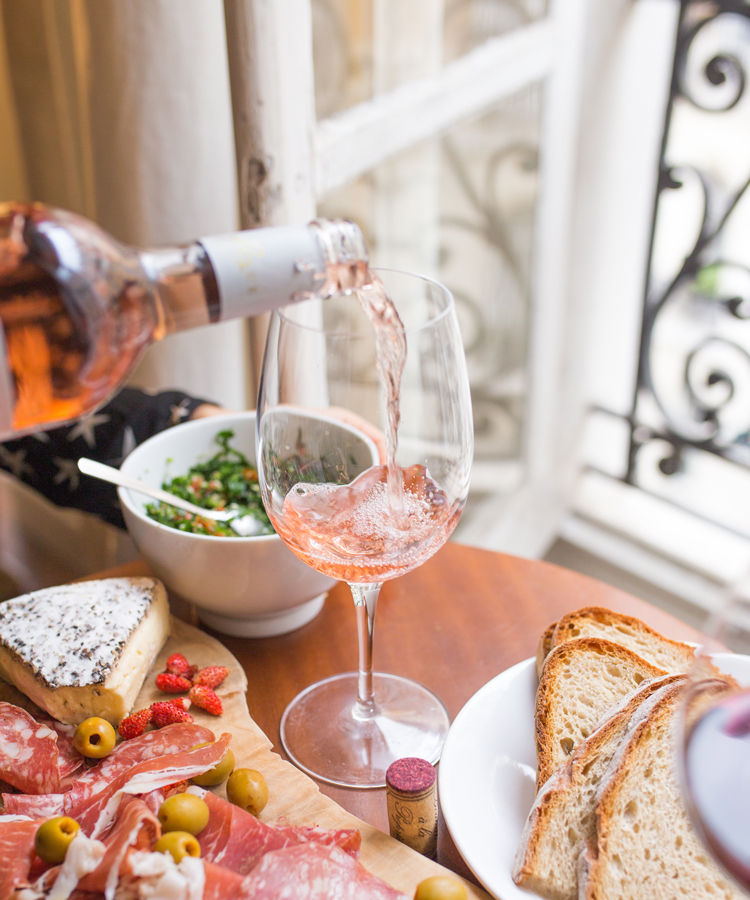As anyone who has scrolled through Instagram in the past six months can attest, rosé is having a moment. And unlike other seasonal trends (culotte jumpsuits, we hardly knew ye), this one has serious staying power.
In the last year Americans’ rosé consumption grew 53 percent by volume to $258 million, according to Nielsen data reported by Forbes. Imports to the United States from Provence, the French region where nearly 90 percent of all wine production is rosé, increased by almost 6,500 percent from 2001 to 2016. America is now the top export market for Provençal rosés.
Industry experts like Paul Chevalier, vice president of national fine wine for Shaw-Ross’s Lineage Collection, an international importer based in Florida, predict the market for these styles of rosés will continue to grow. “Rosés from the Vins de Provence appellations have been trending at plus-40 percent,” he told Shanken News Daily this spring. Chevalier is confident sales will continue to climb throughout the coming year.
What makes this particularly noteworthy is the historical hurdle Americans had to overcome to appreciate pale, crisp Provençal rosés. For contemporary rosé enthusiasts and analysts in the United States, the hot-pink elephant in the room is White Zinfandel.
Developed by Sutter Home in the 1970s, blush wine is characterized by strawberry and cantaloupe notes. White Zinfandel was America’s most popular premium domestic wine in 1986, due perhaps to its ample residual sugar. Its sweet, fruity profile provides a cloying precedent for pink wine in America.
Provençal rosés, with their pale color and bright acidity, revolutionized how Americans perceive and consume pink wine. In a 2007 article titled, “French lead the way to rosé with dry styles,” the Chicago Tribune reported on the rise of crisp Provençal rosés in American wine stores and restaurants.
“The southern French style is a benchmark for bone-dry roses,” Ashley Stockstill, wine director of the now-shuttered Fox & Obel restaurant, told the newspaper. “They have scintillating acidity; they’re very awakening,” she added.
This dry, crisp flavor profile has been defining the rosé category for American drinkers ever since. Provençal rosés are now more than a beverage. They are a lifestyle, launching scores of ballerina-pink merchandise and such ubiquitous social media movements as “yes way rosé,” “brosé,” “rosé all day,” and “slay, then rosé.”
Although Provençal rosés are often associated with Hamptons pool parties and Malibu piers, their dry acidity makes them equally suited to Thanksgiving tables and winter holiday parties. Priced between $10 and $25, many Provençal rosés provide affordable luxury for those thirsty for la vie française all year long.
“Consumers have flocked to the category, especially at restaurants,” Wine Spectator reported in a piece titled, “Provence Rosé Imports Top 1 Million Cases in U.S.” Provençal rosés pair with a wide range of foods, making them a versatile option for sommeliers looking to accompany everything from raw oysters to hearty stews.
Additionally, in major cities and among millennial diners, American appetites are increasingly tending towards lighter and plant-focused fare. Bon Appetit introduced a sister brand, Healthy-ish, in January 2017 to speak to the trend. Award-winning restaurants such as Dirt Candy in New York City and Gjelina in Los Angeles serve vegan, vegetarian, and plant-based dishes to packed dining rooms.
Provençal rosés epitomize this modern movement. These are wines for how America eats, drinks, and lives today. Ours may be a nation of trend seekers, but good taste never goes out of style.
